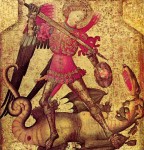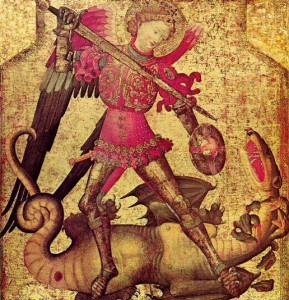First, imagine a sword turning about a point at the cross. The radius of the circle the tip of the sword makes is the distance from the cross to the tip.
Now imagine grasping the sword at that spot but swing the sword with the arm. The whole shoulder gets involved and the radius of the arc that the tip describes is the distance from the shoulder (i.e. point of rotation) to the tip. This can change depending on how you hold the sword. It can also change to an arc that cannot be described by a radius if the relationship between the sword and the shoulder is changing throughout the motion. (the true reality of the case)
Add in some good foot movement and the closest fitting radius may become very large.
Now lets looks at the concept of a blade striking the target. If the blade strikes at the point of percussion (typically a few inches back from the point), then a certain portion of the edge comes in contact with the flesh. The more contact at once, the harder it is to cut. This is why curved blades seemed to be preferred for cutting.
If the radius of the arc of the blades travel is short, then the point of percussion is entering the flesh and moving in a short arc. If the radius is long, the point of percussion may enter the target and pass through as the arc is so large as to be more of a line than an arc.
The larger this radius may also mean that the blade is oriented so that the point enters the flesh before the point of percussion, cutting it’s way into the body. Though it is a cut, the effect is much like a thrust. Just as I discussed the concept of thrusting with the edge, here is an example of Thrusting with a cut.
Thus large radius cuts result in a thrusting action in the cut that should penetrate deeper depending on the point of contact with the body. The concept is that the most damaging cuts will travel in close to a straight line, i.e. a large radius arcs (actually a very complex series of arcs).


